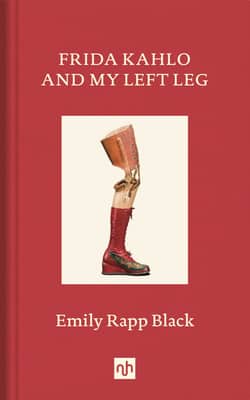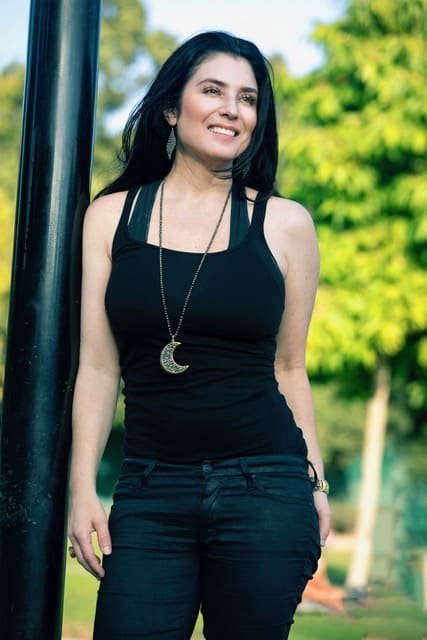by Billie Hinton
There is something stuck in my throat. It happens two weeks after a holiday on which two of the people I love most in the world argue bitterly and stop speaking.
It’s a cold day; I buy cream of broccoli soup at the co-op, drive through the winter landscape back home, bare branches of oak and poplar, maple and hickory inked black against the pale pink overcast sky.
I drink the soup from its white paper container while standing in our living room, the soft white Christmas tree lights reflecting in the panes of every window, comfort and heart ache.
I’m in a rush to get to the barn, do the chores, push my thoughts out past this to where there’s nothing, just me mucking manure, listening for the quiet, healing snorts of horses eating hay.
Something fibrous touches my throat when I tip the container for the last swallow; it feels big, not something I should swallow, but the impulse is to choke it down, so I do, only in that moment realizing I am making a mistake.
My mother always said to eat soft white bread for something stuck and we don’t have that, but we do have sourdough, so I chew and swallow, trusting the bread to take the fibrous thing down with it. It doesn’t.
Drinks of water don’t help, nor do salt water gargles. Sometimes it takes awhile for the sensation of scraped throat tissue to fade, so I walk to the barn and do chores. Waiting, everything seems to irritate: cold air, the hay, the dust in the barn as I muck stalls. I try to forget the throat part of my body, aim my focus hard at the horses, the little donkeys, my daughter’s pony. I take a walk around our farm, finally go inside at dusk, prepare dinner, which I cannot eat.
Later, in bed for the night, eager for sleep and escape, it remains, something sharp and worrisome pushing against soft pink tissue that I imagine but cannot see.
Morning light, the thing. Still pushing.
The ENT who sees me as an emergency walk-in puts a scope through my nose, down my esophagus, and says she doesn’t see anything.
But.
Her equipment is old, she confides, and there’s a dark area she can’t really illuminate.
I seize on that darkness. It isn’t hard to do; with my two beloveds still not talking, my own grim view of what happened between them, I am already thinking the worst. They might never repair this jagged rift, the edge of which seems to reside inside my chest.
The doctor, a thirty-something quiet woman who seems perfectly competent but has old equipment, suggests I wait a month and have another scope if I still have trouble. A month seems like a very long time.
For 30 days I feel the stuck thing, ticking the calendar in my head, sometimes out loud as I walk the farm, using the month as a prescriptive number. It will be gone in 30 days. The doctor implied this. The stuck thing is also a rogue thing: it goes vertical, other times horizontal, sometimes it is rough and fibrous, other times a sharper object, painful, a reminder of everything in my life that is hard to swallow.
***
I stop eating solid foods, liquefy everything into soup, smoothies, still hoping to wash the stuck thing down, reducing the possibility of food piling up behind it, a logjam. How big is the space of a throat? My brain runs with this image of tight dark spongy tissue, narrowness crisscrossed with a piece of something that shifts but cannot go any further than it is.
I lose 10 pounds but the stuck thing remains.
Visualizations, eucalyptus oil in the steamy shower, opening things up, pulling white light through my name written in the sky above our house, into my forehead, down through my throat with a rush of energy in an effort to push the thing through and out.
Meditation, release, relaxation, acceptance, forgiveness, all the things I have taught to clients in psychotherapy sessions, reminding them that these are not miracle cures, but if they do them, the techniques will help. Little, methodical ways to manage grief, anxiety, fear, sadness, the unnameable feeling that accompanies a broken heart.
The thing is still there. Beloveds still not talking.
Almost unbelievably, I learn to tolerate both.
***
More than a month later, because it takes a long time to get an appointment, I walk into a huge university hospital’s ENT clinic. Their equipment is state of the art, the doctor a young woman from India who puts a scope in expertly and shows me live video of my throat.
My laryngeal tissue is pink and healthy, she is impressed.
She asks me to eat a big spoonful of blue jello; her assistant peels the foil lid off a container and offers it and a plastic spoon to me. I swallow tentatively, watch the gelatinous blue bolus slide down and disappear with ease.
You see how that went down, the doctor says. I nod. This is powerful knowledge, she adds, and I nod again, wanting this knowing to be more than just a swallow, I want it to grow larger, expand into my life and the lives of those I love. Powerful knowledge, letting things go. Swallowing pride.
She offers whole graham cracker squares and tells me to eat them quickly, an entire cracker in one bite, the way you would if you were having a snack, she says.
I balk, tell her I don’t eat entire crackers in one bite, the image in my head is that of a stubborn, frightened horse.
She urges, like a mom might, assures me she’s a doctor, can save me if I choke, though she knows I won’t.
I try to explain that it’s not choking I’m afraid of, not that I might die, but that I might have to live with this thing forever, the feeling of it, the sharpness, the lack of control.
It will be okay. She is lovely even in the harsh light of a medical clinic exam room, her brown skin rich and deep, dark eyes full of care and confidence. I wonder where her family is, if she’s married, are there children. Whether they talk to one another.
I cram the cracker in and chew, swallow quickly and watch as the tan lumpy blob slides down without a hitch.
This is important, she repeats, pointing to the screen. You see there’s nothing there, right? She moves the scope, illuminating every shadow. This is state of the art equipment. There is no darkness here.
I nod, because I see the clear passage that is mine, but even so, I feel the stuck thing lodged like an invisible lump, hard to swallow, heart in my throat, stuck in my craw.
***
She turns off the machine and removes the scope. I know you feel something, but trust me, she says. Eat regular meals, no more liquid shakes. How much weight have you lost, she asks. 20 pounds. You need to move past this. The longer you go the worse it will be.
Walking in and again when I leave, I pass a huge wall-sized display in the ENT clinic hallway, crammed with actual objects that have been removed from people’s throats. A toothpick with a green cellophane decoration, a car wash token, large baby diaper pins, the pop top from a sardine can, a belt buckle. Things no one would imagine putting in one’s mouth, much less try to swallow. How satisfying it must be to have such things removed and held out to you, pinched between forceps, no question the ordeal is done.
A week later, still stuck, I call my homeopathic doctor and share the saga. She prescribes a remedy for grief. A month passes. I cancel the return appointment with the ENT because I already know what she’ll say. Powerful knowledge.
My weight is down 30 pounds.
I read online about people who have lived years with things stuck in their throats, every test done that can be done, procedures far beyond my own two ENT scopes. They believe doctors missed the stuck things, know without doubt something is there. Some schedule procedures in which their esophaguses are stretched.
***
Another month passes. I feel better, less sad, but the thing in my throat remains. I’ve lost 40 pounds, still eat soup, scrambled eggs and sandwiches with soft fillings. Nothing fibrous. I leave the celery out of tuna salad, refuse anything toasted, broccoli is verboten. Sometimes at night, when I’m trying to fall asleep and my mind races with remnants of conversations I’ve had with the two who won’t speak but communicate through me, the mysterious object seems to grow larger. I sit up, read, drink water, gargle salt water. I take another dose of the homeopathic remedy, as if it might spark an instant and miraculous cure.
Nearly every day I stop in the barnyard while horses and donkeys and pony watch, raise my arms to the sky, imagine yet again writing my name in white light across the blue or gray day, or the dark velvet of a starry night, envisioning the light streaming through the center of my forehead, down my throat, my body, my legs into the earth beneath. Grounding. Safety. Clearing all stuck things.
When I feel something in my throat, I invoke the live video of the blue jello going down, the graham cracker blob, the perfectly functional, visibly clear passageway.
***
Late one night, when I can’t sleep because the thing is overpowering my ability to ignore, I read about a man who also had a stuck thing. He too had every test, saw in live video that nothing was there. He’d had a rough time with his boss, big stress, and eventually determined that his vagus nerve had been activated. He had his vagus nerve stimulated, says it was only when he resolved the original problem with his boss that his throat cleared, that anxiety and depression medications often prove useful in cases like his. Like ours.
I’m a psychotherapist, I talk out loud while walking the farm, administering soothing words and self-hugs, research to affirm the facts. Maybe I should get Zoloft, or Prozac. Can medication do what I cannot? I read neuroscience, excitable nerve cells.
Mine are excitable for sure, but I’m starting to have multi-hour spans of time when I don’t feel the thing in my throat. I let my mind go there, slowly, almost sneaking to think the thought: it’s gone. Later it returns, sharp, fibrous, vertical, horizontal. I feel it when I swallow, feel it when I don’t. How can something that is not truly there feel so real? What triggers the sensation that it’s there, then not? Maybe this will be the rest of my life, monitoring the position and pressure of something inside my body that is not actually present.
I start to think about living with this thing. With my throat. Being in between two people, holidays and celebrations incomplete because they won’t be in the same place anymore. I imagine a life that includes two of every holiday.
Maybe neither are as bad as I think they will be.
***
In the spring it’s decided; I’ll travel with one of the beloveds to California, 9 days down the Pacific coast. There is still no direct communication between the two, but feelings have shifted and mellowed; I have hope that the silence between them might not last forever.
We revisit old haunts, the place I lived as a graduate student during my final clinical internship, the gorgeous vistas down Highway 1, Santa Cruz to Los Angeles, where I lived as a young woman for a year, a long evening with my best friend, meeting her husband and sons, she meeting mine.
So much joy.
I’m still careful about what I eat, but no more liquid-only meals. I chew my food with precision, try to forget everything when I swallow, trust that the healthy throat tissue and muscles will manage their tasks.
The powerful knowledge of the graham cracker video remains with me, but I’ve also learned something even more powerful. When I feel the sensation, I can make it disappear with my mind.
I don’t know how it works. I feel the thing in my throat, then I relax something. It’s not an actual muscle that I relax, more like a mental muscle, a silent gesture. I bestow a sort of forgiveness, time traveling back to the moment before anything was wrong at all. When I do this, the sensation disappears.
Do we have the power to heal ourselves but don’t even know it?
***
It’s been years since the thing in my throat hijacked a winter and all of a spring. I can’t name the day it left for good. I don’t know if there was ever anything truly stuck, if something in the cream of broccoli soup nicked my throat tissue and started the ordeal, or if the entire thing was related to what in hindsight feels like two seasons of pure heartbreak.
I know the phrase, she carries her heart on her sleeve, and the other one, her heart was in her throat. I know the feeling of actual tight searing pain that seizes my throat when I’m upset, tearful, emotionally unwound. It makes sense that the vagus nerve could be activated and take months to resolve.
What I also know is that the mind and the body are powerfully connected. Our bodies can take upsets and hang onto them, creating symptoms that mimic disease and disorder, defying laboratory testing, procedures with state of the art machines, resulting in mistaken diagnoses, no diagnoses, puzzlement on the faces of doctors.
And beyond this, our minds can learn, in what seems a miracle unto itself, to let these things go.
The vagus nerve registers heartbreak and gut-wrenching feelings.
-Bessel van der Kolk, M.D.
-The Body Keeps The Score: Brain, Mind, and Body in the Healing of Trauma
~~~~~~~~~~~~~~~~~~~~~~~~~~~
You know it’s an amazing year to be a reader when Emily Rapp Black has another book coming. Frida Kahlo and My Left Leg is remarkable. In this book, Emily gives us a look into how Frida Kahlo influenced her own understanding of what it means to be creative and to be disabled. Like much of her writing, this book also gives us a look into moving on (or passed or through) when it feels like everything is gone.
Pick up a copy at Bookshop.org or Amazon and let us know what you think!
~~~~~~~~~~~~~~~~~~~~~~~~~~~
Are you ready to take your writing to the next level?
Two of our favorite writing spaces are launching new opportunities for working on your craft. Circe Consulting was formed when Emily Rapp Black and Gina Frangello decided to collaborate on a writing space. Corporeal Writing is under the direction of Lidia Yuknavitch. Both believe in the importance of listening to the stories your body tells. If you sign up for a course, tell them The ManifestStation sent you!
Anti-racist resources, because silence is not an option
~~~~~~~~~~~~~~~~~~~~~~~~~~~




